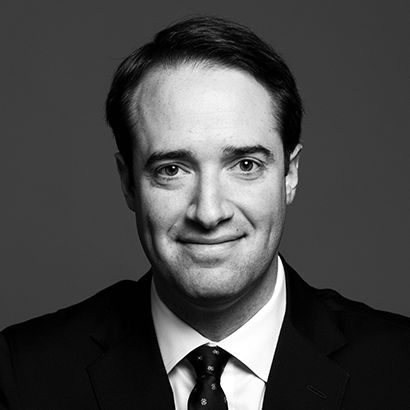The (Corporate) Mind Is Its Own Place
As important as corporations are to modern commerce, Courts have long struggled with how to make these fictional persons responsible for their actions when allegations against them require the Court to assess their state of mind. The problem is as old as the modern corporation, and can cause exasperation when corporations fail, leading Lord Chancellor Thurlow in the 18th century to remark that a corporation, being a fiction, “has neither a body to kick, nor soul to be damned.”
On October 11, 2024, the Supreme Court of Canada released two important decisions grappling with the failure of corporations involved in significant wrongdoing. In Aquino v Bondfield Construction Co (“Bondfield”), the Court addressed when the intention of a corporation’s directing mind can be attributed to the corporation for the purpose of setting aside certain payments as transfers at undervalue under the Bankruptcy and Insolvency Act (“BIA”). In Scott v Golden Oaks Enterprises Inc (“Golden Oaks”), the Court addressed when the knowledge of a corporation’s directing mind can be attributed to the corporation for the purpose of determining when that corporation discovered claims arising out of a Ponzi scheme perpetrated by the corporation.
Each of these decisions illustrates how hard it can be to create a simple rule identifying a corporation’s state of mind. The traditional mechanical rule involves identifying a human being responsible, either generally or at least for that aspect of the corporation’s conduct attracting liability, and then attributing that person’s mental state to the corporation. Attribution in these cases is appropriate, except in cases where the human being in question is acting to defraud the corporation. In general terms, this “mechanical” approach to attribution works reasonably well, and was central to the reasoning behind the long time leading case on corporate attribution in Canada, Canadian Dredge & Dock Co v The Queen.
But such mechanical rules can be difficult to apply in situations where a corporation fails, or where there are competing claims of other parties claiming through the corporation. While it is easy to say that a corporation is a separate legal person, modern reality recognizes that a corporation often has several divergent interests standing behind it—shareholders, creditors and, in many cases, members of the public may claim to have been victimized by the corporation, yet find themselves having to step into the shoes of the corporation (usually through a liquidator or trustee) to obtain any substantial redress for wrongs done to them.
Each decision illustrates a different way the mechanical operation of attribution rules can create unfairness for stakeholders in an insolvency context—and the analytical approaches courts will undertake to overcome that unfairness. In Aquino, as in all transfers at an undervalue, the actions of the directing mind were detrimental to the corporation because they stripped it of assets—making a claim to set aside such transfers practically impossible in most cases under the traditional mechanical rule. Similarly, in Golden Oaks, it was argued that a corporation’s claims against investors who facilitated a Ponzi scheme were time-barred because the corporation’s directing mind knew about them, even though there would be no realistic prospect that the corporation would advance any claims against the investors (since to do so would have revealed the corporation’s Ponzi scheme).
In each case, the Court resolved the applicable attribution rules pragmatically in the specific context in which the attribution issue arose.
Aquino v Bondfield Construction Co
Aquino involved fraudulent transfers orchestrated by John Aquino and his associates from two construction companies, Bondfield Construction Company Limited and Forma-Con Construction. The scheme involved creating false invoices for services that were never provided, resulting in Bondfield and Forma-Con paying out tens of millions of dollars to non-arm's length parties, including Aquino's holding company. These payments were made secretly and with unusual haste, often within a few days, and were hidden behind fictitious invoices. Once the companies began to experience financial difficulties, the fraudulent transfers further reduced the funds available to pay creditors.
The situation was brought to a head during restructuring and bankruptcy proceedings initiated in 2019. Ernst & Young Inc., acting as the court-appointed Monitor of Bondfield, and KSV Kofman Inc., as the trustee in bankruptcy for Forma-Con, sought to recover the fraudulently transferred funds under section 96(1)(b)(ii)(B) of the Bankruptcy and Insolvency Act (BIA). The application judge and the Ontario Court of Appeal both ruled that the false invoice payments were transfers at undervalue and could be recovered. They attributed Aquino's fraudulent intent to the debtor companies, despite arguments that Aquino defrauded them as well and that his actions did not benefit them. The Supreme Court upheld these rulings, emphasizing that the purpose of section 96 of the BIA is to protect creditors from actions that diminish the assets available for recovery, even if the fraudulent actions were in fraud of the debtor corporation itself.
Aquino made two principal arguments to resist the section 96 claims. First, he argued that the Monitor and the Trustee failed to establish that the companies were insolvent when the transfers were made. A unanimous Supreme Court rejected this argument, emphasizing that insolvency is not a prerequisite for finding an intent to defraud, defeat, or delay a creditor under section 96(1)(b)(ii)(B) of the BIA. The Court clarified that section 96(1)(b)(ii) is disjunctive, meaning that a debtor must either be insolvent at the time of the transfer (section 96(1)(b)(ii)(A)) or intend to defraud, defeat, or delay a creditor (section 96(1)(b)(ii)(B)). Therefore, even if the companies were paying their creditors in full and on time at the time of the transfers, it did not preclude a finding of fraudulent intent.
The Court further explained that the debtor's financial condition at the time of the transfer is just one of many badges of fraud that may be relevant in inferring an intent to defraud, defeat, or delay a creditor. The application judge had found several badges of fraud, including the secretive and hasty nature of the transfers, the non-arm's length relationships between the parties, and the lack of consideration for the payments. These factors collectively provided a basis for concluding that Aquino, as the directing mind of the companies, had the requisite fraudulent intent. The Supreme Court upheld the application judge's findings, stating that it is no answer to an application under section 96(1)(b)(ii)(B) to argue that the debtor was not insolvent at the time of the transfers. The Court concluded that the intent to defraud, defeat, or delay a creditor can be established based on all the circumstances surrounding the transfers, regardless of the debtor's solvency.
Aquino further argued that because the corporation did not benefit from the transfers, under traditional attribution principles, any intention he had to defraud creditors could not be attributed to the corporation as a matter of law. The Court also rejected this argument, emphasizing that the corporate attribution doctrine must be applied purposively, contextually, and pragmatically to serve the policy goals of the relevant law—in this case, section 96 of the BIA.
The Court highlighted that the purpose of section 96 of the BIA is to protect creditors from actions by a debtor that would diminish the assets available for recovery. This purpose is served by attributing the actions, knowledge, state of mind, or intent of the corporation's directing mind to the corporation, even if the directing mind acted in fraud of the corporation and the corporation did not benefit from those actions. The Court noted that applying the "fraud" and "no benefit" exceptions in this context would undermine the statutory remedy intended to protect creditors.
Consequently, the Court concluded that the test for corporate attribution under section 96 is simply whether the person was the directing mind and whether their actions were performed within the sector of corporate responsibility assigned to them. Since Aquino was the directing mind of the corporations and acted within his corporate responsibilities, his fraudulent intent was appropriately attributed to the corporations, thereby allowing creditors to recover the fraudulently transferred assets.
Scott v Golden Oaks Enterprises Inc
Golden Oaks concerned a Ponzi scheme orchestrated by one Lacasse, who was the sole shareholder, officer, and directing mind of Golden Oaks Enterprises Inc. Golden Oaks, which operated in Ottawa between 2009 and 2013, was presented as a legitimate rent-to-own residential property business. It was, in reality, a fraudulent scheme where Lacasse lured investors with promises of high returns on promissory notes and paid existing investors with funds from new investors rather than from legitimate business proceeds. The scheme collapsed in July 2013, leading to the bankruptcy of Golden Oaks and Lacasse. Subsequently, Doyle Salewski Inc. was appointed as the trustee in bankruptcy and initiated actions to recover illegal interest and commissions paid to investors before the bankruptcy.
The trustee's actions were based on claims of unjust enrichment and statutory claims under the BIA. The investors, who had received interest and commissions from Golden Oaks, argued that the trustee's actions were statute-barred under the Limitations Act, 2002, and that they were not unjustly enriched. They also invoked the principle of equitable set-off and claimed that their referral agreements with Golden Oaks were lawful. With respect to the limitation period, the investors argued that Lacasse (as the directing mind of Golden Oaks) had full knowledge of the improper payments made to investors (having directed them himself). On that basis, the investors sought to attribute Lacasse’s knowledge to the corporation, to argue that the corporation had knowledge of the claims more than two years prior to the expiry of the limitation period.
The trial judge attributed Lacasse’s knowledge to Golden Oaks, but nevertheless found that the trustee's actions were not statute-barred because legal proceedings would not have been an “appropriate” means to vindicate the corporation’s claim until after the trustee had been appointed and the fraud had in fact been discovered. The trial judge ordered the investors to return the illegal interest payments and dismissed other defences they advanced, including equitable set-off. The Court of Appeal upheld this decision for different reasons, emphasizing that attributing Lacasse's knowledge to Golden Oaks would undermine the purposes of the limitations and bankruptcy laws. A majority of the Supreme Court of Canada ultimately dismissed the appeal, affirming that the trustee's actions were timely and that the referral agreements were illegal contracts at common law.
As in Aquino, the majority emphasized that the corporate attribution doctrine must be applied purposively, contextually, and pragmatically to give effect to the policy of the law under which attribution is sought. In this case, attributing Lacasse's knowledge to Golden Oaks would undermine the purposes of the limitations and bankruptcy laws. Specifically, it would preclude the trustee's claims before the trustee was even able to assert them, creating an injustice. The Court noted that Lacasse had no interest in suing the investors on behalf of Golden Oaks while he was in control, as doing so would have exposed the Ponzi scheme. Therefore, the Court concluded that it was not appropriate to attribute Lacasse's knowledge to Golden Oaks, as this would allow the investors to retain the proceeds of their wrongful conduct and reduce the value of the debtor's assets available for distribution to other creditors.
In concurring reasons, Justice Côté declined to resolve the limitations issue by imputing Lacasse’s intention to the corporation, choosing instead to affirm the trial judge’s approach, which was to conclude that a proceeding to recover amounts paid to investors was not an “appropriate means” to vindicate the corporation’s claim under clause 5(1)(a)(iv) of the Limitations Act, 2002. In some ways, the alternative approach of Justice Côté (rooted in the concept of discoverability as opposed to corporate attribution) makes sense. If this approach is not applied, then the only reason why the claim would not be time-barred is because of the incidental reality that the Ponzi scheme was carried on through a corporation. Counterfactually, had Lacasse become insolvent after carrying out the Ponzi scheme individually using his own bank account, under section 12 of the Limitations Act, 2002, the trustee as a successor of Lacasse would have been bound by Lacasse’s knowledge and, but for clause 5(1)(a)(iv), the claims of the trustee would have been time-barred. The majority’s decision to rely on the attribution doctrine would be of little use to victims of a Ponzi scheme perpetrated by an individual. Justice Côté’s reasons provide an additional valid basis for creditors to overcome a limitation period in circumstances of fraud.
Conclusion
Notwithstanding the commercial complexity that gave rise to them, the decisions in Bondfield and Golden Oaks can be explained in simple and pragmatic terms. Identifying when a person’s mental state is to be attributed to the corporation requires a pragmatic assessment of why the corporation’s mental state is relevant and whether the policy of the applicable rule is furthered or hindered by attributing or refusing attribution in the circumstances.
This outcome may seem striking. In a case like Golden Oaks, for example, where attribution is refused, the implication is that for at least some purposes the corporation was effectively a mindless zombie. Such caricatures, however, obscure the reality that corporations as legal fictions sometimes require specific rules to produce defensible and fair outcomes, even though such rules may not be consistent with a strict view of a corporation as a fictional person.


